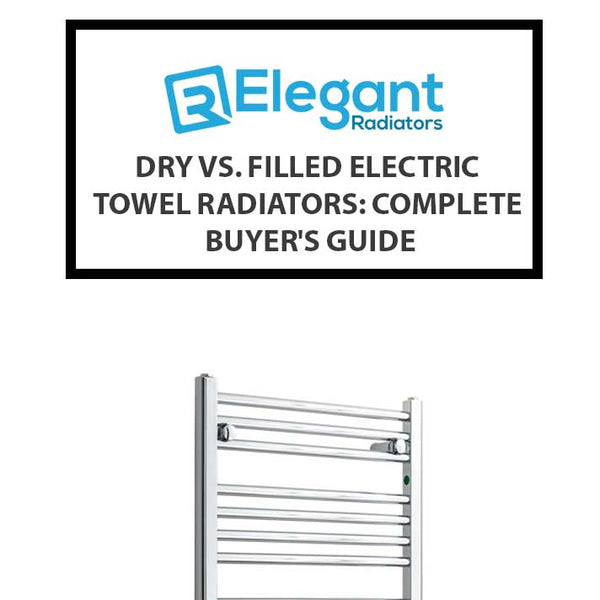How to Choose the Right Electric Radiator and Power for Your UK Home

Selecting the perfect electric radiator for your home in the UK doesn’t have to be complicated. This comprehensive guide will help you understand everything you need to know from how electric radiators work to calculating the right wattage for each room. Whether you search for “electric radiators UK” or even “electric raditor,” this guide is designed to help you make an informed decision with confidence!
1. Introduction
Electric radiators UK are an efficient and stylish way to heat your home. They are easy to install, come in a variety of designs, and can be tailored to fit the unique heating needs of every room. Whether you’re updating your heating system or adding supplementary heat, this guide will walk you through choosing the right power and model for your space.
2. Understanding Electric Radiators
What Are Electric Radiators?
Electric radiators are self-contained heating units that convert electrical energy into heat. They work independently of a central boiler, offering:
• Quick Heat-Up Times: Warm up faster than traditional systems.
• Ease of Installation: No complex pipework or central heating systems needed.
• Flexible Placement: Ideal for both new builds and home extensions.
Note: Many online searches use the term “electric raditor” when looking for these products, but they all refer to the same efficient heating solution.
How Do They Work?
Electric radiators typically use either convection or oil-filled technology to produce heat. Many modern models include features like programmable timers and thermostatic controls, making them energy efficient and simple to operate.
3. Why Power Matters: The Basics of Wattage
The wattage of an electric radiator indicates its heat output. In simple terms:
• Higher Wattage = More Heat Output.
• Lower Wattage = Less Heat Output.
Choosing the right wattage is crucial because:
• Underpowered Radiators may leave your room feeling cold.
• Overpowered Radiators might lead to higher energy consumption and increased running costs.
4. Factors to Consider When Choosing the Right Radiator
Before you start shopping for electric radiators UK, consider these key factors:
Room Size and Volume
• Area: Larger rooms need higher wattage.
• Ceiling Height: Higher ceilings increase the room’s volume, possibly requiring extra power.
Insulation Quality
• Well-Insulated Rooms: Typically need less wattage due to minimal heat loss.
• Poorly Insulated Rooms: May require additional power to overcome heat loss through walls, windows, and doors.
External Walls and Windows
• Rooms with several external walls or large windows tend to lose heat faster. Plan for additional wattage to compensate.
Room Usage
• High-Traffic Areas: Living rooms or kitchens may need constant heating.
• Intermittently Used Spaces: Bedrooms or guest rooms might only need occasional heating.
5. Step-by-Step Guide to Calculate Required Wattage
Here’s a simple method to estimate the power you need for your electric radiator:
Step 1: Measure Your Room
• Calculate Area: Multiply the room’s length by its width (in square metres, m²).
• Consider Ceiling Height: If your ceiling is higher than average (2.4 meters), adjust your calculation to account for extra volume.
Step 2: Apply a Basic Wattage Formula
A common rule of thumb is to allocate about 100 watts per square metre for a well-insulated room. For example:
• A 15 m² room would need approximately 1500 watts.
Step 3: Adjust for Insulation and External Factors
• For Poor Insulation or External Walls: Increase the wattage by about 10-20%.
• For Highly Insulated Rooms: You might reduce the wattage slightly.
Step 4: Factor in Room Usage
• Living Areas: Often benefit from a slightly higher wattage for a comfortable, steady heat.
• Bedrooms: Typically require less power if only used during certain times of the day.
6. Room-Specific Considerations
Living Room
• Characteristics: Usually larger and used frequently.
• Recommendation: Choose an electric radiator with higher wattage and smart controls to maintain a comfortable temperature throughout the day.
Bedroom
• Characteristics: Generally smaller and well-insulated.
• Recommendation: A lower wattage unit with a programmable thermostat is ideal for maintaining warmth during colder nights.
Kitchen
• Characteristics: May be compact with high ceilings.
• Recommendation: Consider a unit that heats up quickly and offers adjustable settings to cater to variable occupancy.
Bathroom
• Characteristics: Small size but prone to heat loss due to moisture.
• Recommendation: Look for a model designed specifically for bathrooms, ideally with moisture-resistant features.
7. Energy Efficiency and Smart Features
Modern electric radiators offer several features to boost efficiency and comfort:
Programmable Timers and Thermostats
• Set and Forget: Program your radiator to heat only when needed, reducing wasted energy.
• Custom Scheduling: Adapt the heat output to your daily routine for improved efficiency.
Eco Modes
• Optimised Consumption: Many models include an eco mode that balances heat output with reduced energy usage.
Smart Connectivity
• Remote Control: Some electric radiators can be managed via smartphone apps, allowing you to adjust settings remotely.
• Integration: Compatibility with smart home systems adds extra convenience.
Recommend products: Electric Towel Rail Timers With Built In Fused Spurs
8. Installation and Placement
Choosing the Right Location
• Clearance: Ensure there is ample space around the radiator for optimal heat distribution.
• Height: Mount at an appropriate height to maximise efficiency.
• Central Placement: Positioning the radiator centrally in the room can promote even heating.
Installation Tips
• DIY or Professional Help: Many electric radiators are designed for easy installation, but professional assistance is recommended if you’re not comfortable with electrical work.
• Safety First: Always ensure the installation meets UK electrical safety standards.
9. Cost Considerations and Long-Term Savings
Initial Costs
• Purchase Price: Compare different models based on their features and efficiency.
• Installation Expenses: Factor in any costs associated with professional installation if needed.
Running Costs
• Energy Consumption: Review energy ratings and efficiency features to understand potential running costs.
• Long-Term Savings: Investing in a model with advanced energy-saving features can lead to lower bills over time.
Maintenance
• Regular Checks: Periodic maintenance helps ensure that your electric radiator operates efficiently and lasts longer.
10. Top Tips for Making Your Decision
• Do Your Research: Compare various electric radiators UK and understand the features that suit your room’s requirements.
• Measure Accurately: Use precise room dimensions to calculate the needed wattage.
• Plan for the Future: Consider how changes in your home or seasonal variations might affect your heating needs.
• Keep an Eye on Offers: Look for seasonal promotions or special deals from reputable suppliers.
• Consult Experts if Needed: Professional guidance can help tailor your choice to your specific needs.
11. Conclusion
Choosing the right power and electric radiator for your UK home is all about understanding your room’s unique requirements. By considering room size, insulation quality, usage patterns, and energy efficiency features, you can select a unit that keeps your space warm and helps reduce energy costs. Use the steps and tips in this guide to make a confident, informed decision, ensuring your home stays comfortable all year round.
Frequently Asked Questions (FAQs)
Q1: How do I calculate the wattage needed for my room?
A: Measure your room’s area (in m²) and multiply by approximately 100 watts for a well-insulated room. Adjust the figure if your room has poor or excellent insulation.
Q2: Are electric radiators energy efficient?
A: Yes, modern electric radiators often include features like programmable timers, eco modes, and smart connectivity, which help reduce running costs.
Q3: Can I install an electric radiator myself?
A: Many electric radiators are designed for easy installation, but if you’re not comfortable with electrical work, hiring a professional is a safer choice.
Q4: What features should I look for in electric radiators UK?
A: Consider models with adjustable thermostats, programmable timers, smart home compatibility, and eco-friendly modes to enhance efficiency and convenience.
Q5: How do I account for heat loss in a room with poor insulation?
A: Increase the wattage estimate by about 10-20% for rooms with poor insulation, multiple external walls, or large windows.
By following this guide, you now have all the essential information to choose the right electric radiator for your room. Enjoy a warm, comfortable home with a heating solution that fits your needs perfectly!
For further advice or product recommendations on electric radiators UK, consult reputable UK heating suppliers or a heating specialist.







